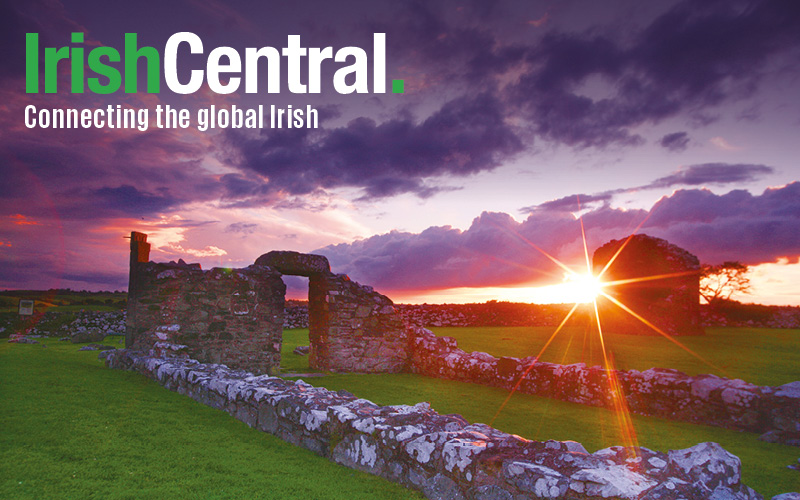-
Slideshow / Archive footage from Pope's 1979 visit to Ireland / Click here
- News / Ireland at a standstill for 3-day event / Click here
How times have changed since Pope John Paul visited Ireland in September 1979 – and I’m only talking about smoking.
When the Pontiff flew to Ireland on the Aer Lingus Boeing 747, named the St Patrick for the occasion, the stewardess announced after takeoff , “Holy Father, distinguished visitors, you may now smoke if you wish.”
I was on that flight as an Irish Times reporter and the deference shown to the Pontiff by some elements of the Irish media illustrated something else that would change over time, the traditional Irish awe of Catholic Church representatives.
A colleague, presented with an unique opportunity to put one question to the Pope in a crush of reporters on the plane, asked “Holy Father, will you bless this picture?”
You wouldn’t get that nowadays from a media made much more cynical and hard-nosed about religious affairs after the scandals that have undermined the leading role of the Catholic Church in Ireland in the last two decades.
The huge and enthusiastic turnout for the Pope’s visit to Ireland created much speculation that it would regenerate the Irish Catholic Church.
The welcome was, however, as much an expression of appreciation for the international recognition that he gave to the relatively young Republic of Ireland, as it was an outpouring of religious fervour.
It was the first ever papal visit to a country that had suffered for its Catholicism in the past, and only the second foreign trip by a Pope who was to visit almost every Catholic country in the world thereafter.
It was an endorsement of the culture of a mass-going nation and a high point for the Irish Catholic Church.
But the slow secularisation of Ireland was already under way and would accelerate with the greater prosperity brought about by the consumer-driven Celtic Tiger.
Many recalled the visit in later years for the fact that the two most prominent and supposedly celibate clerics at the youth mass the Pontiff celebrated in Galway, Bishop Casey and Father Cleary, became the center of scandals for the way they conducted themselves after secretly fathering children, and how the Holy Father’s constant companion in Ireland, Cardinal Marcinkus, later became involved in shady financial dealings that led to the collapse of an Italian bank and the suspicious death of two Italian bankers.
And in the 1990s the nation learned with horror of the terrible, cruel sexual abuse of children in Ireland by some Catholic clergy, which continued unabated long after the Pope had been and gone, and more recently of the cruel treatment and abuse of children in industrial schools run by religious orders.
I accompanied the Pontiff on to the United States after his Irish visit, and it quickly became evident that Ireland had been but a curtain-raiser for this more important destination.
About one in four Americans professed the Catholic faith, making it the biggest Catholic congregation in the world outside of Brazil and Mexico.
Unlike the Irish at the time, American Catholics were in open revolt against some of the conservative tenets of Catholicism, such as the ban on contraception and women priests.
The immense crowds in Dublin gave the Pope an enhanced moral authority with which to launch verbal assaults in the United States against abortion, divorce, contraception and the material selfishness that threatened family life.
In Boston, New York and Philadelphia, the scenes of enthusiasm and affection that had marked the visit to Ireland were repeated, if on a smaller scale. But in Philadelphia especially, the effort to halt liberal trends in the Catholic Church in North America became evident.
The Pope reaffirmed that women could not become priests, and that the automatic granting of laicisation to priests who wanted to return to secular life would cease.
He spoke out against the trend since Vatican II of an increasing number of American priests putting social involvement before evangelisation. He also condemned sexual permissiveness in strong terms.
He followed this up in Chicago, where he reaffirmed the Vatican ruling against contraception as an unnatural act and stressed that homosexual activity was morally wrong. It was the last day of his visit before anyone stood up to challenge the Pope’s conservatism.
Many American nuns had begun to wear civilian clothes when working with lay people. The Pope had spoken out against this practice.
Sister Theresa Kane, a Sister of Mercy and president of the US Leadership Conference of Women Religious, whose mother had emigrated to the United States from Galway, confronted the Holy Father when welcoming him to the Basilica of the National Shrine of the Immaculate Conception in northeast Washington.
Wearing a plain grey suit, she urged him that women be included “in all ministries of the Church”. The Pope was visibly annoyed. He raised his hands slightly to stop the prolonged applause from hundreds of religious sisters at this challenge. In his address at the Basilica, the Pope pointedly urged nuns once again to wear their habits, rather than “civilian” clothes.
This is the desire of the Church, he said. His plea was ignored. A quarter of a century later in the United States American nuns continue to wear “civilian” dress and sisters like Theresa Kane are still fighting, without any success, for the right of women to become priests.
Some things don't change.




Comments